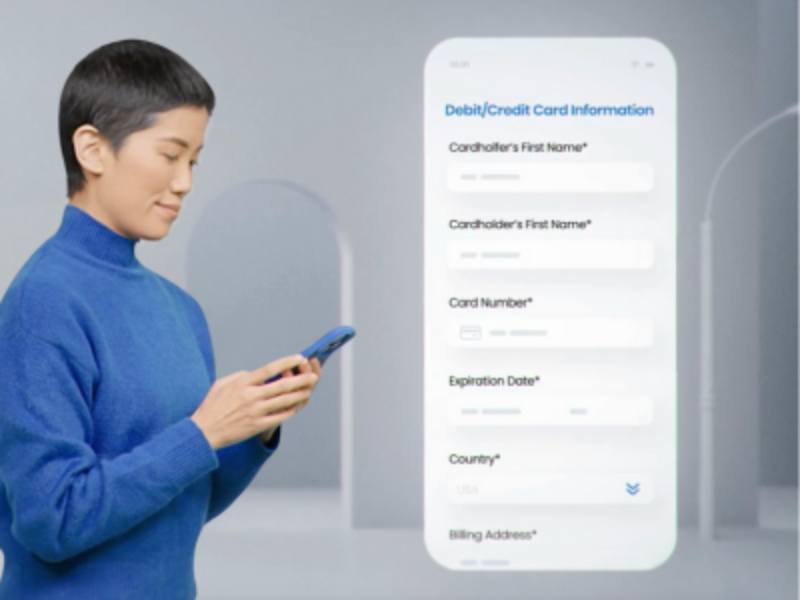A More Efficient Payment Solution for Healthcare
In today’s healthcare landscape, both practices and patients are seeking more effective payment methods. With out-of-pocket expenses reaching nearly 20 percent of healthcare spending, patients increasingly rely on credit cards for payments for their healthcare expenses
However, many providers still rely on outdated billing practices, such as paper statements, which consume significant staff time and are prone to being lost or forgotten by patients. Consequently, this approach often results in missed revenue opportunities for providers.
Enter card on file technology —a solution that accelerates payment processes for providers, enhances convenience for patients, and saves time for everyone involved. By securely storing patients’ credit card information, providers can efficiently charge for outstanding balances, co-pays, delayed fees, no-show or late cancellation charges, recurring payment plans, and upcoming visits. Implementing card on file technology not only streamlines payment collection but also significantly reduces accounts receivable. For patients, it translates to less time spent handling payments during office visits.
Additionally, integrating payment technology directly with Electronic Health Records (EHRs), Electronic Medical Records (EMRs), and practice management systems further optimizes workflow efficiency, saving valuable staff time.
Increasing Card on File Payments at Healthcare Practices
Nearly half of patients (43%) would like to leave a card on file to automate their healthcare payments. This trend presents a significant opportunity for practices to improve cash flow through card-on-file technology. The question remains: how can practices boost the adoption of stored cards on file for seamless, secure, and prompt payments?
#1: Develop a card on file policy for your practice.
Before implementing card on file transactions, it is essential to establish clear guidelines. For example, patients may inquire how you will notify them of charges. Providing options to receive receipts via email, text, or paper mail, allows patients to choose their preferred method.
Additionally, setting charge limits can provide patients with reassurance that your practice will not exceed specified expense thresholds without their consent. Having a well-defined policy not only simplifies patient education but also enhances transparency, ultimately encouraging more patients to opt-in for card on file payments.
#2: Clearly communicate the benefits to patients.
A simple script or talking points for front desk staff can go a long way to aid patient education. Ensure to highlight the efficiency of checkout times. Card on file technology reduces office wait times, allowing patients to swiftly return to their daily activities.
Additionally, reassure patients that their card information is encrypted for utmost security. It is solely used for payments to our practice, ensuring their financial information remains safe and confidential.
#3: Ask for their permission.
Requesting patient authorization before storing their credit card information is crucial. Fortunately, collecting patient signatures is straightforward and can even begin before their visit.
When patients call to schedule appointments, ask if they want to pre-pay their co-pay and save a card on file. You can conveniently send them a link via text or email to complete the authorization. Utilizing digital intake forms also proves effective for gathering authorizations and payment details.
At the front desk, staff can further assist by asking patients if they wish to store a payment method and sign an authorization form. Following their visit, it’s easy to send patients a text or email with a form to securely store their preferred card on file.
#4: Save patient payment information for all future payments.
Once you’ve collected patient authorization, you can quickly store their credit card information in your payment software. Bridge™ Payments will securely store the data and use it for future charges. Plus, payments will automatically post to your EHR or practice management system so that charges are visible.
Collect More Patient Payments, Faster
Encouraging more patients to store a card on file is straightforward and offers significant benefits. Once a patient permits, you can effortlessly charge them for balances, enhancing convenience for both patients and staff. This streamlined process ensures revenue flows in quickly, often within the same or the next day.
An example of a client who found enormous success using Bridge Payments to boost their cash flow is Great Lakes Dental Partners. The ability to store credit cards was essential to their success.
“We went from nearly zero credit cards on file to about 12% across our portfolio in about four months,” said Donna Ramadan, vice president for revenue cycle and compliance. “It really has been a monumental movement forward in a pretty short period of time. And we’re now approaching 30%.”
Using Bridge Payments’ card on file technology, known as Vault, as well as other innovative solutions, Great Lakes reduced its accounts receivable by 65 percent.
Interested in implementing card on file technology at your practice? Consider touring the Bridge Payments suite of payment solutions and experience the benefits for yourself, including:
- Improved revenue cycle management.
- Faster balance billing.
- Reduced chargebacks.
- Expedited check-in and check-out.
- Future visits and family plan payments.



